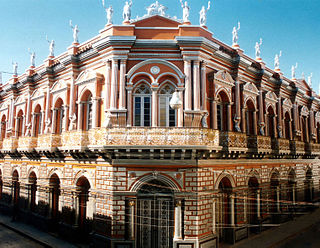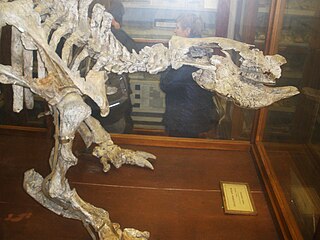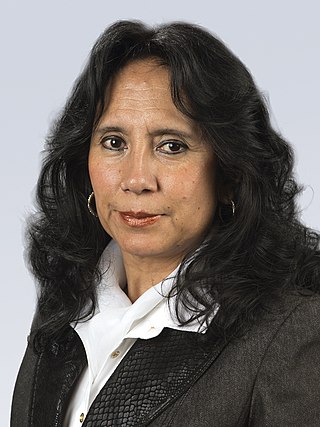
Tarija is a department in Bolivia. It is located in south-eastern Bolivia bordering with Argentina to the south and Paraguay to the east. According to the 2024 census, it has a population of 534,348 inhabitants. It has an area of 37,623 km2 (14,526 sq mi). The city of Tarija is the capital of the department.

Tarija or San Bernardo de la Frontera de Tarixa is a city in southern Bolivia. Founded in 1574, Tarija is the largest city and capital and municipality within the Tarija Department, with an airport offering regular service to primary Bolivian cities, as well as a regional bus terminal with domestic and international connections. Its climate is semi-arid (BSh) with generally mild temperatures in contrast to the harsh cold of the Altiplano and the year-round humid heat of the Amazon Basin. Tarija has a population of 234,442.

Unión Tarija is a Bolivian football team playing at Tarija Primera A, the 2nd division regional league. It is based in Tarija. Their home stadium is Estadio IV Centenário. The team played in the Liga de Fútbol Profesional Boliviano between 1999 and 2006.
Eldredgeia is a genus of trilobites in the order Phacopida, suborder Phacopina, family Calmoniidae. This genus comes from the Devonian of South America and South Africa, usually found in nodules. The trilobite Eldredgeia venusta, from Bolivia, is the most common South American trilobite on today's fossil market, and even then it is not all that common. This genus has a spiny pygidium and usually the eye facets are well preserved.

The Media Luna or Media Luna Ampliada refers to a group of four departments – Santa Cruz, Beni, Pando, and Tarija – in Bolivia which are home to a greater proportion of opponents to the national government led by Evo Morales and the Movement for Socialism (MAS) than the rest of the country. Pando has seen increasing support for MAS since 2009, while Tarija was initially supportive but has opposed MAS in every election after 2014. In contrast to the predominantly Indigenous Andean populations of the Andean region such as La Paz and Cochabamba, the departments in the Media Luna are majority mestizo, as well as being made up of the remaining 26 groups of lowland indigenes with white minorities, specifically in Santa Cruz de la Sierra.

Capitán Oriel Lea Plaza Airport is an airport serving Tarija, the capital of the Tarija Department of Bolivia. The airport is in the southeastern section of the city, which is within a basin of the Cordillera Central mountain range. There is distant mountainous terrain in all quadrants.
Nothropus is an extinct genus of ground sloth of the family Nothrotheriidae, endemic to South America during the Pleistocene epoch. It lived from 0.781 mya—12,000 years ago existing for approximately 0.769 million years. It was believed to be a ground-dwelling herbivore.

Panochthus is an extinct genus of glyptodont, which lived in the Gran Chaco-Pampean region of Argentina, Brazil, Bolivia, Paraguay and Uruguay during the Pleistocene epoch.

Scelidodon is an extinct genus of South American ground sloths. Its remains have been found in the Yupoí and Uspara Formations of Argentina, the Ulloma, Umala, Ñuapua and Tarija Formations of Bolivia, in Brazil, in Chile and in Peru. The youngest fossils have been dated to as recently as 9000 B.P.
Óscar Daniel Zamora Medinaceli was a Bolivian politician and lawyer. A communist student activist in his youth and leader of a failed Maoist insurgency in the 1970s, Zamora Medinaceli went on to become a senator, minister, mayor, ambassador and prefect.
The 7th South American Youth Championships in Athletics were held in Tarija, Bolivia from September 13–16, 1984.
El País is a newspaper published in Tarija, Bolivia, the capital city of the homonimous Bolivian department. It is a part of the editorial group Boquerón Multimedia.

The 2015 Bolivian regional elections were held on 29 March 2015. Departmental and municipal authorities were elected by an electorate of approximately 6 million people.
Tapirus tarijensis is an extinct species of tapir that lived during the Pleistocene epoch. Fossils of the species have been found in the Tarija Formation of Bolivia.
The Pircancha Formation is a Floian to Dapingian geologic formation of southern Bolivia. The green mudstones, shales and sandstones were deposited in a shallow to open marine environment. The fossil Pircanchaspis rinconensis is named after the formation.
The Lipeón Formation is a Telychian to Pridoli geologic formation of southern Bolivia and northwestern Argentina. The formation comprises sandstones and siltstones. Plant fossils comprising rhyniophytes are scattered throughout, with some abundant concentrations on micaceous bedding plains. The fossil flora is the oldest of South America. Also present were quite diverse small, irregularly branching fragments possibly the tips of algae such as Buthotrephis or Hungerfordia.

The Tarija War, also known as the War between Argentina and the Peru–Bolivian Confederation, was an armed conflict that occurred between 1837 and 1839. Because it happened while the Peru–Bolivian Confederation was engaged in a parallel war against the Republic of Chile during the so-called War of the Confederation, both conflicts are often confused. The Tarija War began on May 19, 1837, when Juan Manuel de Rosas, who was in charge of managing foreign relations for the Argentine Confederation and was governor of the Province of Buenos Aires, declared war directly on President Andres de Santa Cruz because of the Tarija Question and Confederation's support for the Unitarian Party.

Club Deportivo Real Tomayapo, best known as Real Tomayapo, is a Bolivian football club based in Tarija. Founded in 1999, it plays in the Bolivian División Profesional after being promoted for the 2021 season by winning the Copa Simón Bolívar the previous season.

Mirtha Natividad Arce Camacho is a Bolivian academic, lawyer, and politician who served as senator for Tarija from 2015 to 2020.











